Norway: Three dates of death
When we look at death records in Norway, we may encounter three different dates. This may be a little confusing.
(Illustration: Erik Werenskiold “Peasant funeral” [Public domain], via Wikimedia Commons)
The first date is called Dødsdag/Døds datum. This is the date when the person passed away. In the older church books the actual death date may not be recorded.
Begravelsesdag indicates the day the person is interred. According to royal decree from Nov. 7. 1682, the funeral had to take place within 8 days after the passing. During winter the burial sometimes took place several months after the passing. This could happend in remote areas and areas with heavily frozen ground (Bratrein 1988:38). In localparishes distant from the rectory, the burial often took place without a minister present (Teigen 2013). The ceremony was held by the sexton or another local lay person, who read from the bible, and lead the prayer and singing.
Jordfestelse/Jordpåkasting is the final committals performed by the grave. This ritual had to be performed by a ordained minister. If the burial took place without a minister present, the minister would perform this ritual the next time he visited the local parish to hold a service (Bratrein 1988:39). The word “jordpåkastelse” refers to the three scoops of earth that is placed on the coffin when reciting the “Earth to earth….” text. We can see the churchrecord below, where the minister on New Year’s day has performed committals for 5 persons who passed away during the month of December. (Records from before 1812)
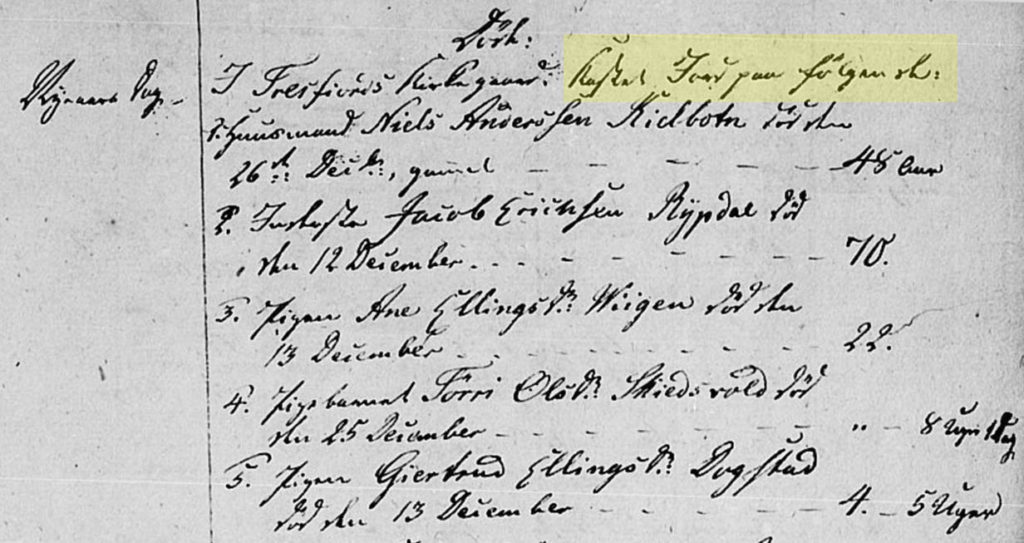
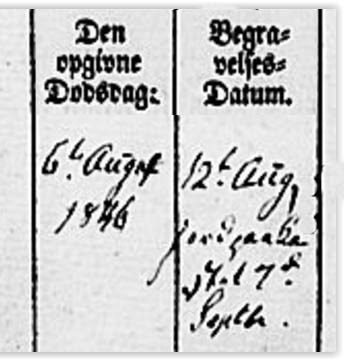 In the picture to the right we see the the reported death date August 6th. The burial day is August 12th. Here the minister has added “jordpaakast” September 17th. (1812 church book revision)
In the picture to the right we see the the reported death date August 6th. The burial day is August 12th. Here the minister has added “jordpaakast” September 17th. (1812 church book revision)
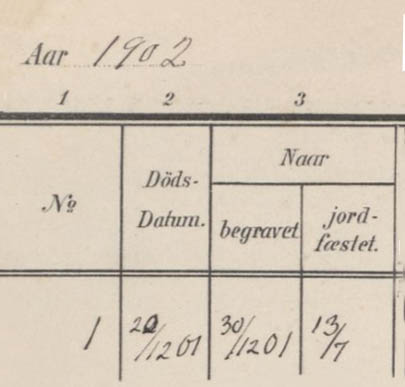
In this picture we see a record from 1902 where date of death (Dødsdatum), burial (Begravet) and final committals (jordfæstet) has got separate columns.
I usually record the burial date, if known, in my genealogy software. If the church record show the date of the final committals, and the burial date is missing I record the date of the committals in the “burial date field”.
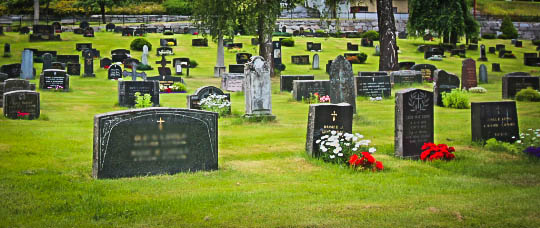
Sources:
Forordning om Begravelser Nov 7. 1682
Håvard Dahl Bratrein, “Den kristne begravelse” in Ottar “-døden skal du lide” 1 (1988)
Arild Teigen: Efter døden en sømmelig begravelse Fron Historielag 2013

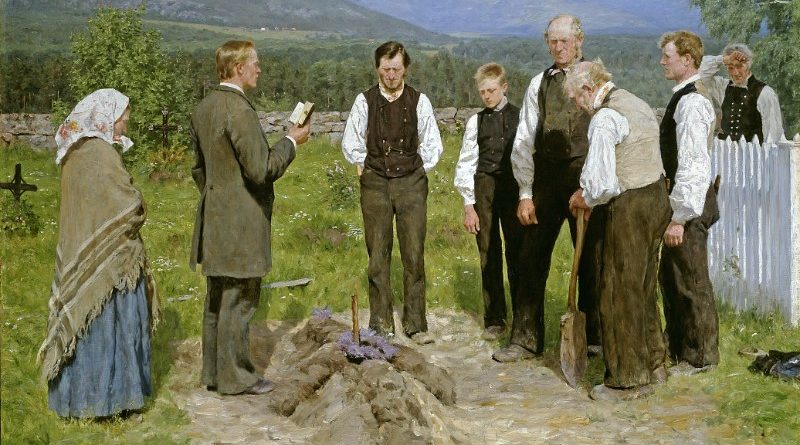




Thank you for this article! It is very helpful! I have never been able to find a burial. Hopefully, now that i have found a family tree, I might be able to find some of my family!!!!!
Great article! Would never have guessed this! Thanks
Martin,
I want to let you know that your wonderful blog post is listed in today’s Fab Finds post at http://janasgenealogyandfamilyhistory.blogspot.com/2016/11/follow-friday-fab-finds-for-november-18_18.html
Have a great weekend!
Thank you Jana. You are a great supporter.
Thank you so much for sharing your knowledge with us! I am wondering why do use the burial date on your software instead of the actual death date? Also, what genealogy software do you use?
Hello
Thanks for visiting and for commenting.
I may have expressed myself a bit poorly. I do record the death date, if known. In the older church records the death date was not always recorded, so I record the death year and the burial date.
I use the Legacy family tree software.
Thanks for clarifying these dates. I’m still a little confused. Given 3 separate dates, dødsdatum, begravelsdag, og jordfestet, If the deceased has been buried, what is done with jordpåkastelse (placing 3 scoops of dirt on the coffin) if the coffin has already been buried and the jordpåkastelse date is after the begravelsdag ? Is the earth placed on the grave site above the coffin or am I missing something? Tusen takk på forhånd!
Hello Pete
You mention an interesting point. The burial in rural areas was most often done without the minister present. The next time he visited the local parish he did the final committals at the grave. Sometimes a stake was left in the earth touching the coffin and protruding above ground. For the final committals, this stake was pulled out so that the earth the minister scooped on the grave would fall down and touch the coffin. Sometimes four boards were nailed together to form a small “chimney” that touched the coffin. Here the earth was scooped down the “Chimney”. After the ritual, the chimney was removed and the hole was filled with earth.
Hilsen fra Minnesota! Well, that certainly makes sense! We have an English saying, “where there’s a will, there’s a way. ” (will in that context=desire or determination to do something). Kanskje er det «man kan om man vil» på norsk. Thank you for the reply, Martin!